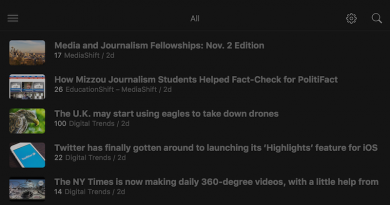How to begin the data conversation

Exploring important issues through numbers isn’t new. It’s just easier than ever before. A journalist’s ability to find, analyze and present data makes all the difference for meaningful local coverage. Using data and documents aids journalists in their watchdog capacity, holding others accountable (cue Best Picture “Spotlight”!). And for high school journalists planning to pursue media careers, being able to interpret data and produce interactive visualizations is essential.
Of course, important stories don’t start with data. They start with curiosity. They start with questions — good questions — about who does what, where money goes, why something is happening (or not happening).
As journalists seek answers to those questions, data can help them compare, make connections between things that may seem unrelated or even uncover new questions.
But “data journalism” is a scary prospect for some high school media staffs, in part because it’s outside their typical wheelhouse. It sounds way too math-ish, and besides, even professionals doing data journalism struggle with a proper definition. Let’s just agree we’re talking about using data to figure something out in order to present the best story possible.
To get students thinking about data, consider approaching it from a few angles.
- Expose students to a few meaningful story packages with data at the core. Do No Harm is a good one, even though it’s a few years old. Discuss the impact of this story. Break down how the reporters approached the story and the role of data. (Here’s a follow-up piece on how they made the data meaningful.)
- A simpler and more recent piece is this data-filled story on state testing problems in North Carolina. Maybe your staff has covered standardized testing?
- Show them some fun data sets to brainstorm what kind of stories they could pursue. For example, music fans may be interested in the Million Song Dataset. They can geek out pretty quickly by signing up for the Data is Plural newsletter, which provides a weekly dose of data.
- Make sure they understand the value of using public records. You can mix that with law and ethics training or Sunshine Week activities and show how using those public records make possible stories like this one: Violent incidents in Hawaii middle, high schools.
- Tie it into current events discussions such as the presidential campaigns underway. The Upshot has great data visualizations as part of the ongoing election coverage.
If all else fails, entice them with eye candy. For students who prefer the visual side, exposing them to sites like Visualoop may be the right “in” for the data conversation.
Over the next few months, we’ll add to the data journalism conversation here, taking things one step at a time. Up next: Finding data. (Shameless plug: JEA also will offer some beginner-level storytelling with data sessions at JEA Advisers Institute and a series of related sessions in November 2016 in Indianapolis.)



